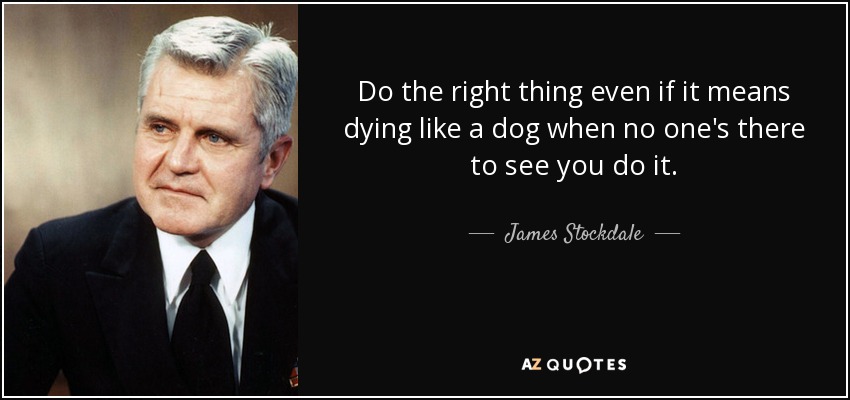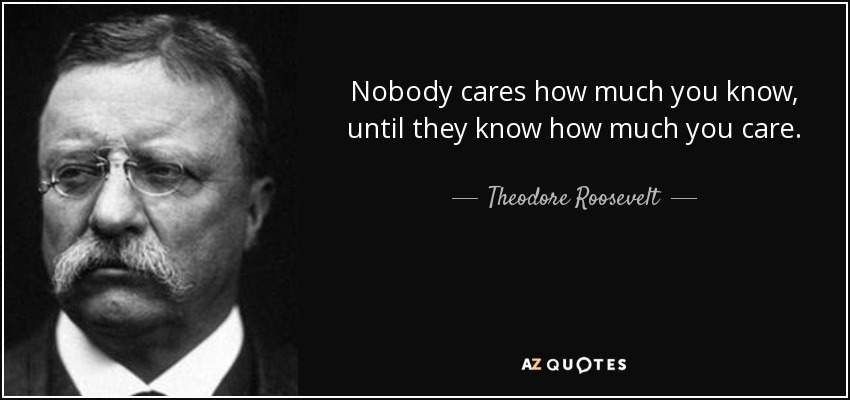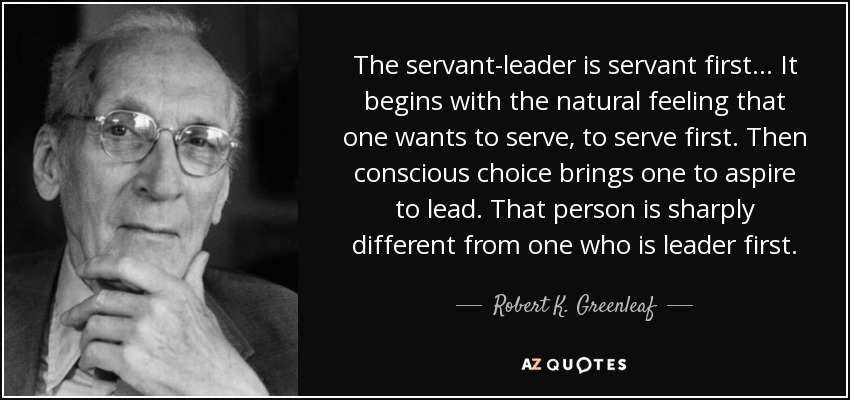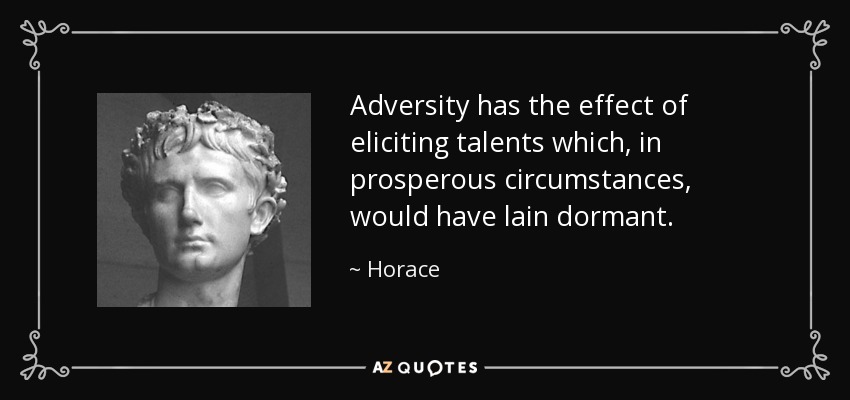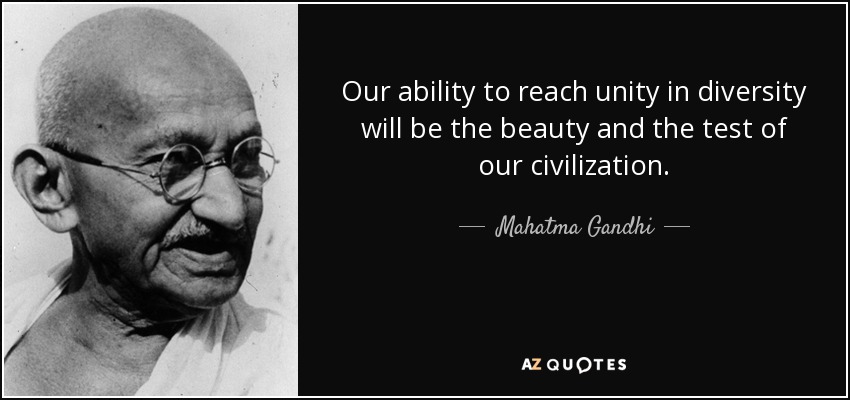Click here to return to Blog Post Intro
Background
Navy Captain James Stockdale (USNA ’47)—Medal of Honor winner for his heroic leadership in prison—created several rules:
- Communicate at all costs.
- When they get around to torturing you, hold out as long as you can, bounce back, and make them do it all over again.
- Don’t despair when they break you; they have broken everyone.
- Pray
After the war, it was clear that the product of the Naval Academy was a person who would do the right thing for no other reason than it was the right thing to do.
Here is the singular mission of the United States Naval Academy: To develop midshipmen morally, mentally, and physically, and to imbue them with the highest ideals of duty, honor, and loyalty in order to provide graduates who are dedicated to a career of naval service and have potential for future development in mind and character to assume the highest responsibilities of command, citizenship, and government.
When Roger Staubach received the Heisman Trophy in 1963, he reflected, “One of the greatest things about winning the Heisman Trophy was the pride it brought to our Navy football team in 1963 and to the entire class of 1965 at the Naval Academy. It was not my trophy; it was the team’s trophy and my class’s trophy.”
Lesson #1 – Leaders are Made
In a Harvard Business Review article titled “Leadership is a Combat Zone”, W.G. Pagonis reflected that the military goes to great lengths to groom and prepare leaders for the demands of leading in combat. A complex mixture of careful selection, formal education, informal mentoring, and systemic rotation through a range of settings is used to prepare officers to effectively lead across contexts and conflicts.
Over the years, the Navy has found that nondescript introverts can lead as effectively as gregarious extroverts. This is a lesson learned over and over at USNA and in the Navy at large. Although certain personality traits may fit certain tasks and contexts better than others, personality will always be secondary to leader knowledge, skill, and attitude.
The curriculum at USNA is rooted in the assumption that formal education and seagoing training are naturally complementary and equally important. Academic preparation accelerates learning in the fleet.
Personality & Leadership
Some Helpful Traits
- Drive: Great leaders exhibit a high need for achievement, an ambitious edge, and a tendency to compete in a variety of contexts.
- Intelligence: Imagination, curiosity, and creative potential. Good leaders show a capacity to organize, synthesize, interpret, and strategically apply a range of data. They are also naturally curious and broad in their interests and intellectual explorations.
- Leadership Motivation: Personality research confirms that those who prefer to influence others and are willing to exercise power over subordinates are best suited for leader roles. Persons who are more emotionally mature tend to use power for the community, not for self-aggrandizement.
- Honesty and Integrity: In study after study, followers prefer leaders who are open, truthful, straightforward, and reliable. A given among USNA midshipmen, integrity is in many ways an absolute prerequisite for effective leadership.
- Self-Confidence: Self-confident people are willing to effectively take control and guide others. Free of leadership-threatening hesitancy or self-doubt, they are calm, graceful under pressure, and confident enough to make a decision and move ahead. Self-confident people are not easily threatened and, for this reason, are seldom irrational, defensive, or impulsively angry.
Unhelpful Leader Traits
- Argumentativeness
- Interpersonal Insensitivity: The leader is detached and aloof.
- Narcissism: The leader is arrogant, self-absorbed, and grandiose in self-appraisal.
- Fear of Failure
- Perfectionism: Bound by unreasonable demands for flawless performance in self and others
- Impulsivity: The leader is focused on self-gratification.
Lesson #2 – Taking Oaths and Making Commitments
Over two centuries, the Navy has discovered a secret about commitment that modern day business would do well to take seriously. To keep your best and brightest young leaders, make the organization part of them; find ways to help them personally identify with the organization and its mission.
Here is a lesson learned well at USNA: If you want your new leaders to be deeply committed to the organization, make entrance difficult and dependent on some hard work and meaningful sacrifice.
The famous military recruiting slogan “Be all that you can be” highlights one foundational belief at Navy. Study after study supports the notion that when organizations address employee needs for achievement, creativity, and growth, these employees are more satisfied and loyal in the long term. When it comes to building committed leaders, nothing may be as important as creating an organizational climate that fosters commitment-making.
Jonathan Shay, a popular leadership expert and business consultant, suggests that trust and cohesion in the workplace are a direct result of the leader’s competence, consideration, and moral integrity as he or she deploys institutional power.
To retain, motivate, and challenge your best and brightest young leaders, you must make them feel not only part of the organization, but part of something larger than themselves.
Lesson #3 – Follow First
Because every leader in the Navy is also subordinate to the commander-in-chief, every leader in the Navy must practice followership. The Navy calls this following the chain of command. Every naval and marine officer is both a follower and a leader at the same time.
Quite often, “leadership failures” are actually failures by subordinates; disengaged, inadequate, or sabotaging followers can indeed sink ships (and commanding officers it seems). Leaders can fail grandly when followers resist directives, fail to share the leader’s vision, or refuse to do the work required for mission accomplishment.
A study of junior officers on the Navy’s top-performing ships found they were significantly more likely to:
- Work as a cohesive unit. Excellent followers work as a team.
- Support top leadership. These officers were loyal to the captain.
- Raise concerns with leaders. Outstanding followers in the fleet did not hesitate to raise questions and concerns with their commanding officers.
- Take initiative. They are self-starters and hard-chargers.
- Take responsibility for team performance.
Midshipmen resonate with the idea that to pass an order off as someone else’s is lousy followership. And this makes for lousy leadership. Excellent followers think for themselves and take initiative for creatively and enthusiastically accomplishing tasks required for the organization’s success.
Stellar followers approach their roles with enthusiasm and commitment to establish and maintain competence. Competence is the capacity to integrate knowledge, experience, and contextual factors in order to function smoothly and effectively in the real world. Competent followers become intentional students of the organization, literate in the organization’s mission and objectives, and very aware of the Commanding Officer’s philosophy and leadership style.
Competent followers are self-aware, familiar with their primary strengths and weaknesses. They only make promises when they know they can deliver. Excellent followers are straightforward, forthright, transparent, and thoroughly honest when asked for an answer or opinion.
Leaders want subordinates who take appropriate risks without seeking reassurance or permission. Many problems can be corrected immediately without the commanding officer’s attention.
Followers Who Fail
- Anxious/Immobilized: Because anxiety actually inhibits performance, anxious followers put the mission at risk because they are prone to becoming immobilized.
- Sticky/Dependent: Few things are as unpleasant for leaders as a high-maintenance follower. This is the subordinate who requires copious quantities of reassurance in order to get the job done. This follower will not take initiative or show autonomy.
- Arrogant/Grandiose: Humility combined with a sober assessment of one’s actual abilities is an essential virtue among midshipmen.
- Rigid/Compulsive: The best followers are careful and attentive to detail, but they are simultaneously able to switch gears quickly and adapt to handle adversity or sudden changes to orders—they demonstrate great flexibility.
You have to learn to follow if you want to excel as a leader. There are no shortcuts here. Excellent followers speak their minds and safeguard the commander’s best interests by delivering accurate, if unpopular, news. Finally, midshipmen learn to act expeditiously when trouble breaks out. They never pass the buck. And afterward, they take full responsibility for the outcome.
Lesson #4 – Character Counts
The Honor Concept is simple, “Midshipmen are persons of integrity. They do not lie, cheat, or steal.” It is drilled that the Honor Code is the minimum standard against which all facets of life are judged.
The enforcement and maintenance of the Honor Code occurs nearly exclusively at the peer level. Midshipmen are often harder on one another when it comes to violations of honor than senior officers might be. On more than one occasion, a midshipmen honor board has recommended expulsion of a midshipmen, only to have the commandant or superintendent ultimately decide against such a severe sentence.
The question midshipmen ask themselves when decisions are made is this: “Who shall I be?” That is, what sort of agent or leader will I be? Not simply “What shall I do?” The first question is more basic, more foundational, and more critical to ensuring excellent moral leadership among the young officers we generate for the fleet.
The honor system specifies three absolute moral imperatives: honor, courage, and commitment.
1. Honor
From the Navy field manual, “We will conduct ourselves in the highest ethical manner in all relationships with peers, superiors, and subordinates; Be honest and truthful in our dealings with each other, and with those outside the Navy… Encourage new ideas and deliver the bad news, even when it is unpopular; Abide by an uncompromising code of integrity, taking responsibility for our actions and keeping our word…”
During an address at the Naval Academy in June of 1996, President Jimmy Carter (USNA ’47) quoted from his Navy Bluejacket Manual—an officer manual issued on his first day as a plebe in 1943: Those who serve on ships are expected to exhibit obedience, knowledge, fighting spirt, reliability, loyalty, initiative, self-control, energy, courage, justice, faith in ourselves, cheerfulness, and honor, but above all comes absolute truth, the final test of a man.
2. Courage
“We will have courage to meet the demands of our profession and the mission when it is hazardous, demanding, or otherwise difficult; Make decisions in the best interest of the Navy and the nation, without regard to personal consequences…”
Followers of courageous leaders often borrow from the courage of their leaders as they face the anxiety that accompanies new challenges, unfamiliar demands, and perhaps even torture or death. In business as in the military, courageous leaders stand up for their people, show an abiding belief in their unit’s ability to get the job done, and make tough decisions without passing the buck.
3. Commitment
“We will demand respect up and down the chain of command; Care for the safety, professional, personal, and spiritual well-being of our people; Show respect toward all people without regard to race, religion, or gender; Treat each individual with human dignity… Exhibit the highest degree of moral character, technical excellence, quality and competence in what we have been trained to do; Work together as a team to improve the quality of our work, our people, and ourselves.”
The third and final principle—commitment—could just as easily be called Caring—it’s a sturdy commitment to caring for those we lead. Subordinates know when a leader cares for them. The caring leader takes time to know and understand subordinates.
Midshipmen and Naval and Marine Corps officers are expected to be people of integrity—no exceptions. From the day midshipmen take the oath of office, it is expected that they will not lie, cheat, or steal. It really is that simple.
Excellent leaders communicate commitment and caring through authentic respectfulness.
Lesson #5 – Create Tri-Level Vision
Excellent leadership hinges on the leader’s capacity to construct the right vision for a unit or organization at just the right time. Vision provides an ideal image or picture of what the unit can become.
In the Navy, leaders take the helm of everyday military teams and mold them into high-performing combat crews. This seldom demands futuristic vision.
Visioning requires the leader to deftly construct a potent and stirring image of the organization and its culture. This image offers followers a vivid picture of what they can corporately achieve.
A tri-level vision includes three important domains:
(1) Self-Vision (Hone a vision of self-as-leader that realistically incorporates talents & vulnerabilities);
(2) Follower Vision (Craft convincing visions of key followers); and
(3) Unit or Command Vision (Craft a vision for the unit or organization writ large).
Self-awareness, sometimes painfully accrued, is the first step toward outstanding leadership. Being responsible for more than yourself—that is an absolute necessity of real leadership.
Followers rise to the level of the leader’s expectations. When a leader successfully communicates a vision and expectation for a follower as performing well above his or her current level, the follower’s performance often changes accordingly.
Never underestimate the power of a commanding officer’s words when he or she says to a follower, “Excellent work,” “I’m impressed with you,” “You’re a top-notch officer,” or perhaps even, “You’re very agile.”
Followers will rise to achieve the command or organizational vision you create, but only if you simultaneously offer them a vision of themselves as capable and ready to roll.
An excellent unit vision will be both inspiring and directive; this big picture offers direction to subsequent decisions and activities while allowing individuals and smaller teams enough space for creativity and innovation in achieving the big goal.
An excellent corporate vision will also be simple, concrete, and inspiring. Although there is no formula for creating a vision for your team, there are a few important components:
- Try to involve the main stakeholders in formulating the vision.
- Make sure the vision plays to the strengths of both the individual followers and the leader.
- The vision has got to inspire and create a sense of urgent meaning and personal importance among the crew.
- An ideal vision is concrete enough to lead to attainable and tangible results.
The job of visioning is best described in the Navy’s second-class leadership textbook, which says, “The essential qualities of a successful vision should be simple and idealistic and not a complex plan. It should appeal to the values, hopes, and ideals of an organization’s members. The vision should be challenging but grounded in the present reality. The vision should address what is important for the organization and how people should be treated. Finally, a successful vision should be simple enough to be communicated clearly in five minutes or less.”
Lesson #6 – Inoculate for Stress
A leader should do everything his or her troops do. Never expect subordinates to do a task you are not willing to do yourself. Be compassionate, but do not let grief overcome you.
Decades of research on trauma shows that incidence of post-traumatic stress disorder (PTSD) is drastically reduced when members of a traumatized unit are quickly reintegrated, when leaders get members to give voice to their experience of the traumatic event, and when the team can quickly return to the “front lines.”
When catastrophe strikes, acknowledge it, bury your dead, let your team talk about the experience, and then pick up your weapons and get back into the fight.
All leaders face stressful circumstances. Excellent leaders understand that appraising a situation as manageable is half the battle.
Lazarus and Folkman summarize a range of research showing that when we interpret an event as challenging versus overwhelming, we engage in what they term problem-focused coping. Problem-focused coping involves acting calmly, directly, and proactively to tackle the situation and improve it. Because we perceive ourselves as capable of handling the problem, we are mentally freed to act without anxiety or hopelessness.
In the military and in life, we need problem-focused leaders at the helm.
Emotion-focused coping on a warship or the chairman’s office can be deadly. We engage in emotional coping when we identify a situation as impossible, unmanageable, or beyond repair. Emotion-focused coping may involve panic, hysteric reaction, or worse, hopelessness.
Hardiness is a personal trait that research shows helps to moderate reactions to stress. Hardy leaders are prone to believing in not only the possibility, but also the high probability of a positive outcome. They act with optimism and often report milder responses to loss or stress. Hardiness predicts confidence in the leader role, better health, and greater resilience when catastrophe strikes or stressors mount.
Let’s face it, stress is an omnipresent and pervasive fact of life for leaders. Although stress can’t be prevented, it can be minimized and adapted to. It’s what you do with stress that counts.
Framing circumstances as challenges, remaining problem-focused, practicing relaxation, and keeping fit are all important components of adapting well. Effective leaders accurately appraise the threat associated with a situation and respond with calm, problem-focused strategies.
Lesson #7 – Put Shipmates First
Ship, shipmate, self. For sailors in the Navy, it is not about self. First, foremost, and always, it is about the ship, squadron, submarine, or Marine unit. Protecting the ship and completing the mission must always be foremost in every sailor’s or marine’s mind. Nothing is more important; no duty is more sacred.
The best part about the Naval Academy is teamwork. You are no alone ever; someone will always be looking out for you.
Too often, leaders in organizations try to go it alone. They use the John Wayne strategy—deluding themselves into believing that a one-man (or one-woman) show will get results. It never works.
When Robert Greenleaf introduced the term servant-leadership, he described a phenomenon deeply familiar to many military officers. Servant leadership is defined as a natural inclination to serve others first.
“The Captain goes down with the ship.” Leadership is first and foremost an obligation. Increasing leadership brings increasing responsibility. Leaders move from good to great at the same rate at which they see their leadership duties less in terms of onerous obligation and more in terms of sacred duty and remarkable opportunity.
Outstanding leaders place needs of followers before their own, and they enjoy reciprocal loyalty.
Lesson #8 – Drill for Success
When a crew constantly prepares for combat and adversity, they’ll be ready when the time to confront these challenges arrives. And it nearly always arrives.
In We Were Soldiers Once…and Young, Commander Hal Moore says, “We were training for war, and leaders are killed in battle. I wanted every man trained for and capable of taking over the job of the man above him.”
When it comes to loss of life and property, human error presents a more potent and consistent threat than any foreign enemy. So, is there a formula for reducing human error and minimizing damage? Although there is no foolproof method for doing this, the ideal formula seems to contain about 90 percent preparation and 10 percent spur-of-the-moment creativity and improvisation.
Midshipmen are taught to appreciate the importance of drilling for every possible scenario to be faced at sea. When drilling always encourage and listen to innovative ideas and fresh recommendations about how to get the job done—especially when the sheer magnitude of the challenge requires something novel.
At USNA, as in the world of business, the most successful leaders are those who manage to get followers “fired up” about performing exceptionally well—even when it comes to rote and repetitive tasks such as uniform inspections and parade performance. Inevitably, one finds a charismatic and creative leader at the helm of a successful military unit or civilian company.
The onus is always on the leader to lead by example and ensure that the team has direction, training, preparation, and frustration tolerance. Practice, preparation, and more practice are the hallmarks of well-prepared and well-led organizations.
Lesson #9 – Lead by Example
At Navy, midshipmen learn to become intentional models. They learn that serving as an exemplar to followers is an inescapable fact of leadership. Modeling is nonnegotiable. Like it or not, you will exemplify leadership to those you lead. In the military, learning from exemplars is absolutely essential to achieving the mission.
The space shuttle (Columbia) tragedy has shown us another important factor in leadership. When the Russian submarine Kursk sank, one of the key criticisms of President Putin was his refusal to cut his vacation short. For days after the tragedy, he stayed at his vacation home on the Black Sea. This is in stark contrast to the actions of President Bush. While on weekend retreat to Camp David, he was informed of the tragedy. Even though he could nothing tangible by returning to the White House, he did anyway. And in so doing, he helped stabilize the entire nation. Perception is everything. He was working in the White House, he appeared on television, and he was clearly leading the country. When times get tough, it is important to consider symbols. President Bush offered a symbolic model of caring, commitment, control, and strength.
Think of the intentional leader as a willful and deliberate teacher. He or she actively seeks opportunities to model crucial skills and leader behaviors as a means of guiding, developing, and mentoring. Rather than model arrogance, the ideal model is caring, transparent, and willing to admit foibles and failings. The excellent model is also modest and imbued with a good sense of humor and humility.
The leader’s attitude and behavior have a profound effect on the climate within the entire organization. When leaders provide an impressive example of job competence, communicate an inspiring corporate vision, and use copious helpings of empowerment and praise with subordinates, they set a positive tone for the entire command.
Stephen Covey describes climate-creation from the perspective of principle-centered leadership: “The basic role of the leader is to foster mutual respect and build a complementary team where each strength is made productive and each weakness made irrelevant.”
Some leaders present a model we should emulate. Others show us what not to do when it is our turn to lead.
Excellent role models in the leader role do three things to stamp out cynicism quickly:
- Leaders must identify cynical attitudes among followers.
- Leaders must make sure followers have appropriate expectations upon entering the organization and then follow through to insure that promises are kept and reasonable expectations are met.
- Leaders must not only refuse to become cynical themselves (especially when their own expectations about leaders go unmet), but they must also kindly confront it in subordinates and convey sincere expectations for enhanced performance.
The old adage, “Never ask your followers to do something you wouldn’t do” has never been more relevant than it is today. Outstanding leaders go first and ask followers to come along.
Lesson #10 – IQ is Not Enough
In The Nicomacbean Ethics, Aristotle said, “Anyone can become angry—that is easy. But to be angry with the right person, to the right degree, at the right time, for the right purpose, and in the right way—this is not easy.”
All too often, organizations equate technical competence and intellectual horsepower with general capacity for leadership. This is an erroneous connection. In point of fact, leaders can possess outstanding technical expertise (e.g., mastery of engineering systems, accounting savvy, business planning) and demonstrable intellectual prowess, yet be entirely ineffectual as leaders. So, what’s missing here? Daniel Goleman and others would simply call it emotional intelligence.
Pagonis pointed out the need for both expertise and empathy this way, “In many cases, what they are missing is empathy. No one is a leader who can’t put himself or herself in the other person’s shoes. Empathy and expertise command respect.”
Emotional intelligence describes qualities like understanding one’s own feelings, empathy for the feelings of others, and the regulation of emotion in a way that enhances living and leading.
The Navy’s Leadership Curriculum covers the five essential components of the emotional quotient (EQ):
(1) Self-awareness;
(2) Self-regulation;
(3) Motivation;
(4) Empathy; and
(5) Social Skill.
Self-aware leaders understand how emotional states steer their behavior and how their emotional responses affect others in both their personal and work relationships. Self-knowledge brings confidence, realistic self-appraisals, and genuine and open interaction with others.
Self-aware leaders play to their strengths. They look for jobs and performance arenas in which they can shine.
Research on leader emotions shows that when leaders are prone to expressing negative emotions, their subordinates rate them as less effective than more regulated leaders. Leadership climate sabotages the mission. Seeing a leader as explosive and unpredictable generates anxiety and avoidance in crewmembers; this crew is more likely to withhold critical information.
The USNA works to create Naval and Marine Corps leaders with the capacity for controlling or redirecting their disruptive impulses and moods. The objective is not to create robotic or emotionless military leaders, but rather leaders who are characteristically calm, cool-headed, thoughtful, self-reflective, comfortable with ambiguity, and willing to delay gratification. These are the behaviors that help protect their integrity and create a climate of trust and confidence in followers.
If you want your crew to speak up and take initiative, don’t micromanage and never allow them to think you’re omnipotent.
Empathy is the ability to accurately recognize and understand the emotional messages of others. (For more, check out my summary of Roman Krznaric’s book Empathy: Why It Matters, and How to Get It, which gives readers some very practical suggestions.)
Leaders seeking to increase empathy should use this sequence of listening skills: actively attending to the message; comprehending and interpreting what is being communicated; responding in a manner that reflects correct comprehension and understanding; and finally, storing the message in memory for use in subsequent interactions.
Empathy is not sympathy. One need not become overinvolved in the feelings of others, nor should the leader actually “feel” follower emotions in the way the followers experience them. Empathy merely requires accurate understanding. New leaders are often too quick to jump to solutions before fully understanding the problem.
Great leaders can sense, understand, and communicate understanding of follower viewpoints and reactions. The emotionally sophisticated leader holds an advantage over less sophisticated leaders and typically enjoys significant loyalty among followers.
Lesson #11 – Decide, Delegate, and Disappear (3-D Empowerment)
Delegation increases the self-worth of those delegated tasks and enhances the company’s project. Just ensures that your leadership vision is simple and articulated clearly.
Rear Admiral Goodwyn advised, “Decide, delegate, and disappear.”
Leadership defined by visioning, trusting, and getting out of the way is diametrically opposed to leadership characterized by micromanaging, distrusting, and demanding. Threatened leaders can become domineering, tyrannical, and even bullying. They can fall prey to the notion that iron-fisted control and leadership through intimidation will buy results. In nearly every circumstance, they are wrong.
Commander Michael Abrashoff of USS Benfold (and author of business best-seller It’s Your Ship!) discovered, “Empower your people and at the same time give them guidelines within which they are allowed to roam. I called it my line in the sand: I had to be in on any decision that could kill someone, injure someone, waste taxpayer money, or damage the ship. But short of that, anyone on my ship should try to solve any problem that came up.”
The Pygmailion effect notes that followers frequently rise (or fall) to the level of a leader’s expectation. Consequently, wise leaders set high expectations and communicate genuine belief in the crew’s capacity to meet the challenge and succeed.
Psychologist David McClelland’s research reveals that those high in need for achievement are naturally more competitive, enjoy taking responsibility for problem solving, and experience a deep sense of pleasure in regard to accomplishing tasks.
The young officers that the Naval Academy prepares for the fleet are all high achievers. They savor challenge, puzzle solving, and the stimulation that tackling a new problem offers.
Considerate leaders are friendly and supportive of followers. They generate a variety of methods for communicating concern about individual followers’ personal situations and showing appreciation for the work they do.
The paranoid leader is unconsciously and constantly suspicious and distrustful. Chronically fearful of sabotage from within the crew’s ranks, this leader assumes ill will among subordinates and responds in kind as a means of self-preservation. This leader has no alternative but to seize control, demand constant evidence of obedience and loyalty, and undermine the crew’s internal motivation through punishment, constant scrutiny, and at times, ridicule.
The obsessive-compulsive (or as Freud would say, “anal retentive”) leader is notoriously rigid, ordered, driven by ritual, and anxious about failure. This leader is too anxious to let others do important work and feels compelled to check and double-check followers’ work.
Just as parents work for years to mold sons and daughters who are self-policing, self-motivated, and self-directed adults, so too do excellent leaders understand that leading subordinates to lead themselves is the sine qua non of outstanding leadership.
When leaders are reluctant to give up control, they communicate distrust and marginal expectations. When they micromanage, the sabotage innovation and energy. They stunt follower development and create an atmosphere void of self-leadership. When followers are given the opportunity, when they are empowered, they will often exert tremendous effort for their leader. But when stifled, indifference and demotivation quickly become the norms.
The best leaders understand the paradox of getting more by managing less.
Lesson #12 – Create Unity by Prizing Diversity
Although the USNA brigade today is quite diverse and generally representative of the American population, the Academy, like any organization has had to work at deliberately integrating previously excluded groups.
Diversity is an element of our culture that will only expand. It is therefore safe to assume that successful leaders in any organization will be those who openly embrace elements of diversity while showing particular acumen when it comes to bringing a wide range of followers together in ways that promote both personal and professional unity.
The question for leaders is this: How can you most effectively integrate all members of a diverse group—especially previously excluded minority members—while minimizing negative fallout and building a sense of unity and cohesion? Creating a culture that applauds diversity and models tolerance is a responsibility that rests squarely on the shoulders of the leader.
In any organization, successful leaders discover methods for making the integration of previously excluded groups personal: “She’s not just any woman, she’s your shipmate and she just might save your life or give her own one day.”
The most effective route to leading a diverse mix of followers is acculturation. Effective leaders seek acculturation in their organizations by helping followers to talk the language and appreciate the values and traditions of various subgroups while remaining rooted in their own language and values. In the USNA’s leadership course, the term cultural intelligence is often used to refer to the process of creating such an acculturated fighting force. Leaders in business and the military must constantly acculturate or run the risk of stagnation and rigidity.
USNA graduate Mike Abrashoff found unity and tolerance to be essential ingredients in leading a diverse crew as CO of the USS Benfold. Although “diversity” training had been a staple of the ship’s schedule, Abrashoff shelved the program and began leading what he referred to as “Unity Training” for the entire crew.
The trick for a leader is to get his or her people to stop focusing on the differences among them and start focusing on the things they share.
In the end, the success or failure of a military command or civilian business will hinge to some extent on the leader’s capability as a unifier—an inspiring model who can create a vision, display respect and fairness, protect new organizational members, create acculturation, and make amends when the organization has failed minority groups.
If there is one factor that above all others is utterly essential to creating a unified organizational culture, it is the example set by leaders. Excellent leaders are active and outspoken advocates for integration and unification. They model fair treatment of all members regardless of gender, race, religion, etc., and they are careful to choose diverse models for emulation and recognition.
A 1976-1977 study of attitudes about women at UNSA showed that those male students with the greatest levels of interaction with women midshipmen—all the men in the plebe class—developed progressively and significantly more positive views of their female comrades (e.g., they were more likely to agree that women could stand the stress of command responsibility and that women should be considered for important command positions). It was clear that the more exposure to women midshipmen helped break down stereotyping and traditionalism in attitudes that might otherwise stymie integration of a new group.
The lesson for leaders is that in order to blend previously excluded groups into your organization, arrange interaction between polarized and unfamiliar groups from the start.
Research shows that when members of a majority group have contact with high-status members of a minority group, prejudice toward all members of the minority group tends to decline.
Wise leaders are deliberate about giving minority groups representation high in the leadership hierarchy of an organization. When a leader prizes diversity and creates a powerfully unifying vision, individual members of the team feel safe and can get about the business of fighting the war—whatever that may be. Outstanding leaders are publicly and consistently supportive of minority group members.
Excellent leaders create command cultures defined by mutual respect across gender, racial, ethnic, and religious lines. Unifying leaders create opportunities for increased interaction among polarized groups and communicate a unifying vision to diverse followers.
The Final Gouge: 12 Leadership Lessons
- Leaders are Made.
- Take Oaths and Make Commitments.
- Follow First.
- Character Counts.
- Create Tri-Level Vision.
- Inoculate for Success.
- Put Shipmates First.
- Drill for Success.
- Lead by Example.
- IQ Is Not Enough.
- Decide, Delegate, and Disappear.
- Prize Diversity.
May you heed these leadership lessons and become a leader the Annapolis Way, as you shoot for the stars!

